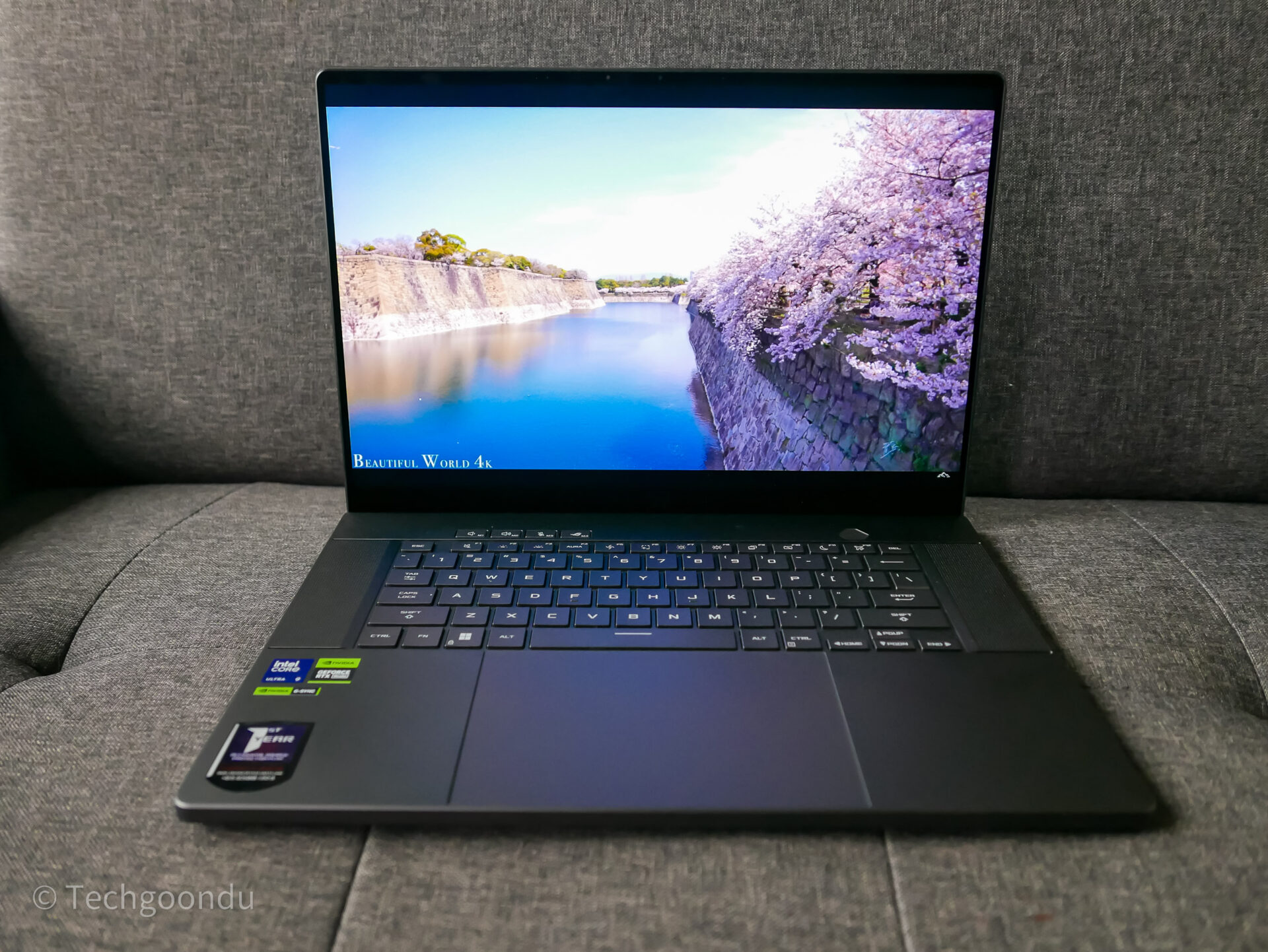
Asus has been making some great looking laptops for a while now and the latest ROG Zephyrus G16 feels like yet another winner in the making, starting from the moment you unbox the gaming notebook.
While this is a high-powered machine with a 16-inch OLED screen, it manages to look relatively portable and mobile. The slim bezels around the display help to make things look streamlined.
Okay, 1.85kg isn’t the kind of weight you’d like to hug around on a train daily (thin-and-light machines weigh around 1kg). However, this Asus notebook is light enough to bring to an occasional gathering of gamers, say, over a weekend.
Design-wise, it is a sleek yet minimalist machine, with clean lines all round, including the large touchpad that goes from edge to edge. The chassis feels solid to touch and is largely fingerprint-free.
You can say there is minimal bling here, thankfully. Only the backlit keyboard and the blinking light strip on the cover remind you that this isn’t just a staid business laptop. I guess gamers do grow up.
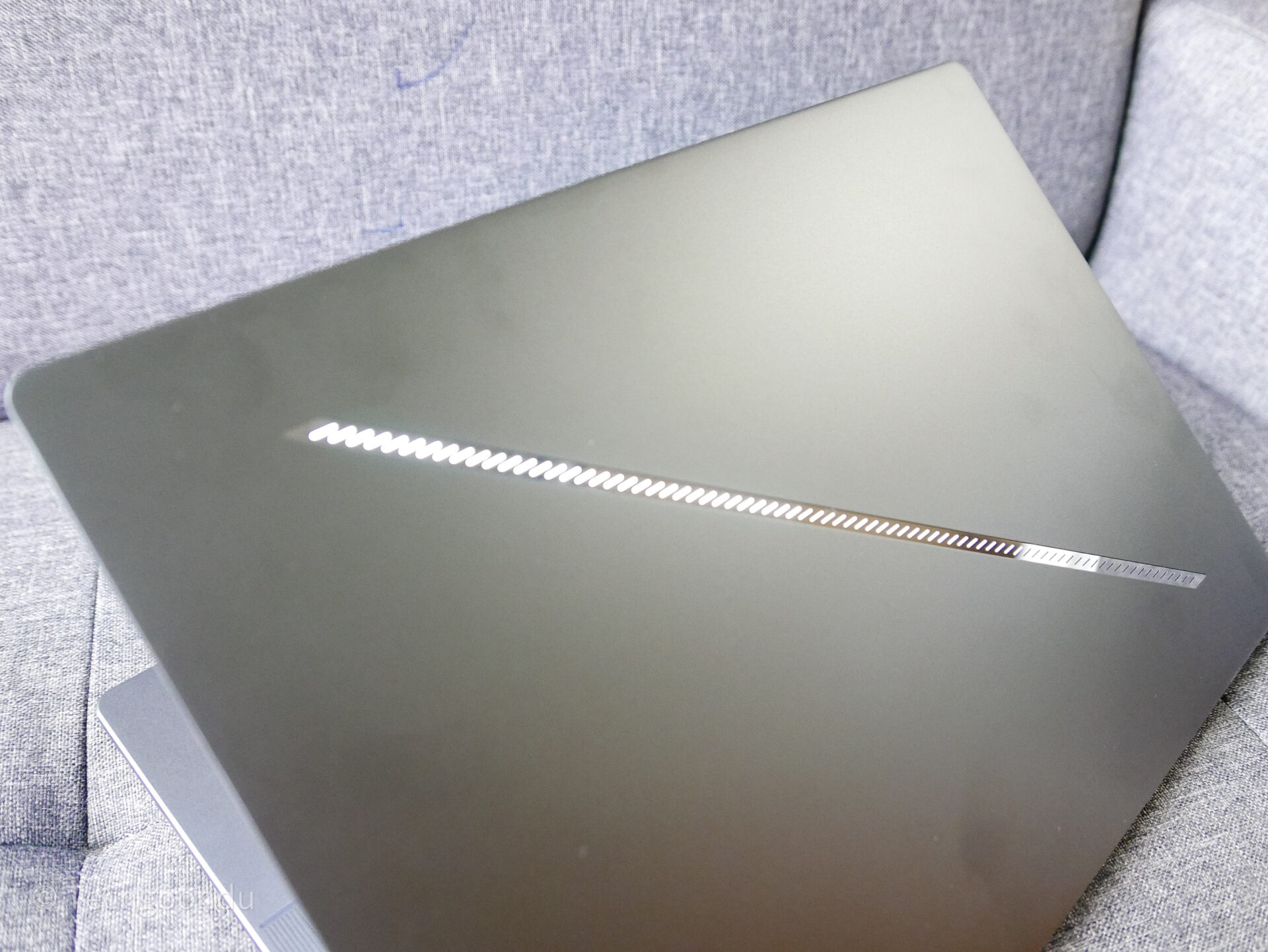
The model I’m reviewing is the 2024 ROG Zephyrus GU605. It sports the latest Intel Core Ultra 9 185H processor that promises improved AI performance (when the apps appear later).
It is also packed with 32GB of DDR5 memory, a 1TB of solid state drive storage and, importantly, a more-than-capable Nvidia GeForce RTX 4070 laptop graphics processor.
This should let you play the latest AAA games as well as those in the years ahead with pretty high image quality settings turned on. It helps that Asus has slightly overclocked the graphics chip by 50MHz, from 1,605MHz to 1,655MHz.
The most impressive thing for me, however, is the ROG Nebula Display. Running at a high refresh rate of 240Hz (most phones are at 120Hz today and regular PC monitors offer 60Hz), it exhibits almost no trace of motion blur.
You’ll instantly notice this when you move your mouse pointer around in Windows 11. It stays perfectly visible and sharp even as you navigate quickly around menus. This high refresh rate translates to games as well, so you don’t miss a split second’s response time in a tight contest.
The excellent OLED screen also offers great contrast and colour vibrancy, especially when you’re watching a well-shot Netflix or YouTube show. The screen isn’t 4K but 2,560 x 1,600 resolution is fine at this size, especially when it comes to getting decent performance in games.





Speaking of games, you can expect the GeForce RTX 4070 to do its job here. Though not as hardcore as its more expensive RTX 4080 and 4090 brethren, this graphics chip gets you through some demanding games.
I fired up Cyberpunk 2077, for example, and managed to play with ray tracing switched on, though at the Low setting. I played through several busy scenes and things were smooth.
Running the game’s built-in benchmark, the Asus notebook came back with an average frame rate of 72.19 frames per second. It hit a low of 38.11 fps but also had a max of 93.53 fps. Actual gameplay, most importantly, was smooth.
Of course, this was with Nvidia’s DLSS (Deep Learning Super Sampling) turned on to help with the performance. In effect, this uses AI to create new frames and generate images to help move the game along while displaying all the eye candy.
What about Starfield, another demanding game? Again, it runs smooth, with Ultra settings and DLSS turned on. On the busy Jemison home planet, which seems a little framerate-capped, the Asus notebook came back with 40-plus to 50-plus frames per second.
Firing up a slightly older game – Far Cry 6 – I also got smooth framerates. Running the game’s benchmark with Ultra settings and the HD Texture Pack, I got an average framerate of 73 fps, with a minimum of 59 and max of 80.
Throughout the gameplay, what struck me the most was how much I’d been missing playing games on a monitor with a slower 60Hz refresh rate.
Graphics pop up and there is a sharpness and clarity on the Asus notebook, thanks to its high 240Hz refresh rate. If you plug the notebook to an inferior monitor, you might spot the difference quite quickly.
I also ran the 3DMark benchmark, which simulates actual games. As expected, the results were good. In the Time Spy subtest, the notebook scored 10,859; in the Fire Strike subtest, it scored 23,424; and in the Night Raid subtest, it scored 46,239.
In comparison, an Asus notebook with a lesser Nvidia RTX 4050 graphics chip from last year scored just 6,594 on the 3DMark Time Spy subtest.
I also ran the PCMark test on the Asus ROG Zephyrus G16. The notebook came back with a score of 6,893 for a benchmark that measures how well PCs handle everyday tasks like video calls and spreadsheets. This is higher than the 5,000-odd score typically on thin-and-light machines.
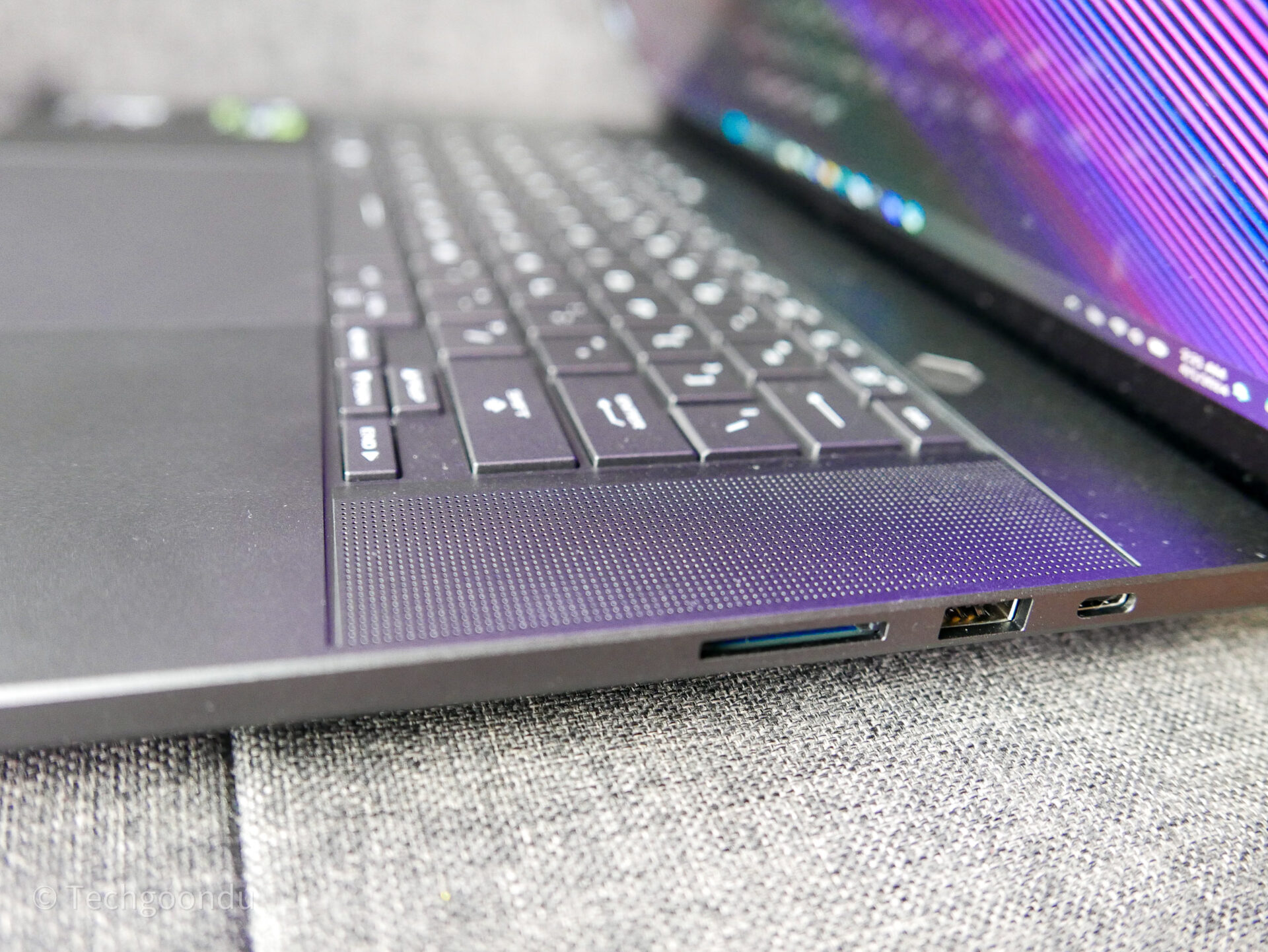
Besides the performance, what I also like are the speakers by the sides. They offer a slight sense of surround sound and can deliver solid punchy bass in games. Okay, these are small, flat soundboxes but they do an admirable job within the confines of a notebook.
The good news is the ROG Zephyrus G14 supports Dolby Atmos so you can expect more immersive audio. For stealth missions or survival horror titles, this could be an important feature on a gaming PC.
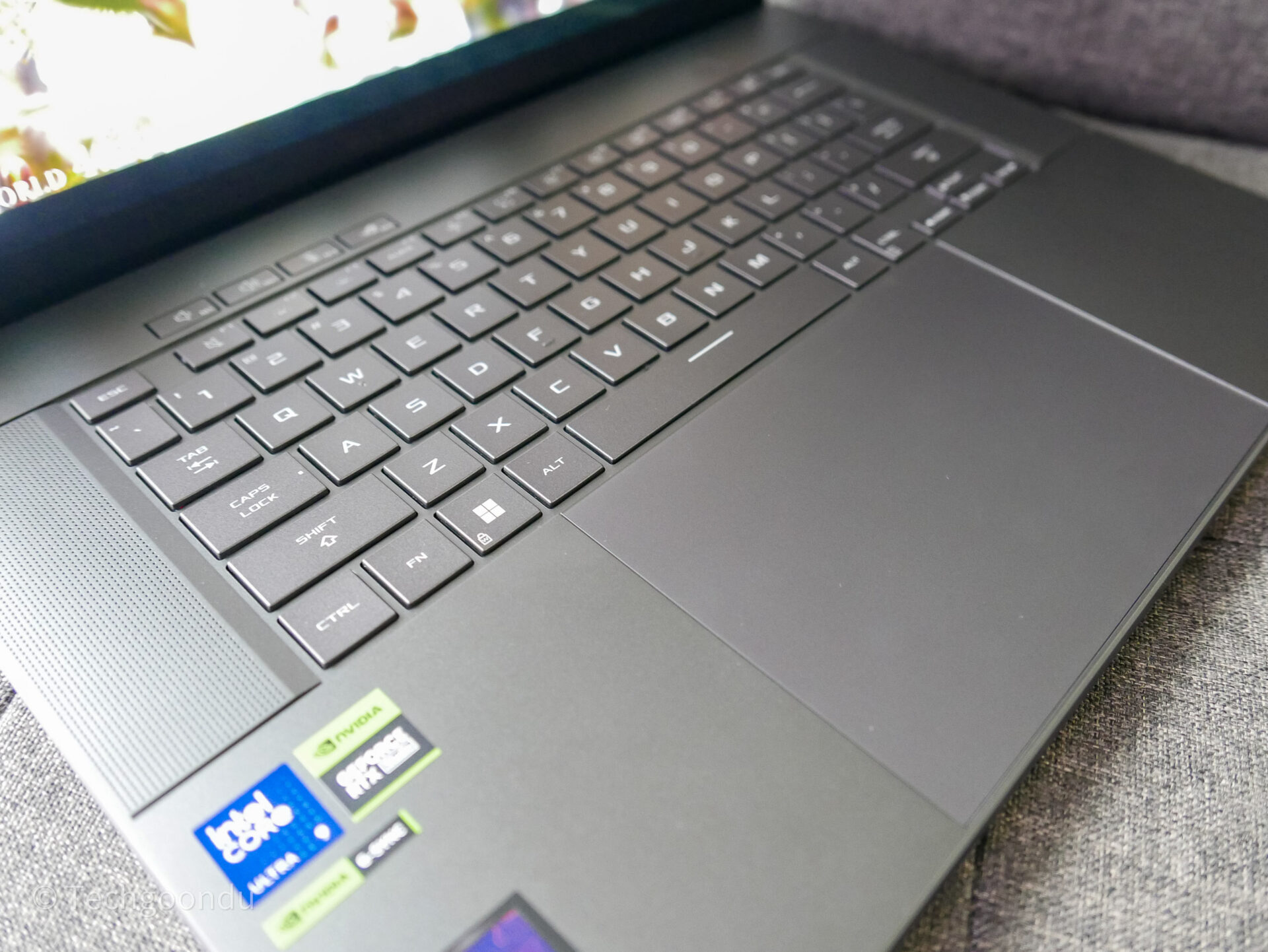
What about the keyboard? If you touch-type, like I do, you might take a little time to get used to the Tap and Caps Lock keys being close to the much-used WASD keys.
That said, I have little to complain about the keyboard, which is generously sized. The keys are well spaced out to reduce typos while the key travel is decent so you don’t end up banging your fingers on the metal.
The large touchpad is also a good thing to have when you don’t have a mouse by your side. Moving across the large 16-inch screen isn’t really an issue here.
What you do need to note is that this notebook can run pretty hot when you’re playing your favourite games. I’m thinking of the top portion just above the keyboard, which seems to be a heatsink of sorts to remove the enormous heat from the graphics card. It feels hot to touch at times.
If you turn the notebook over, you’d notice there are vents on the entire bottom of the notebook. Even so, given how slim the machine is and how much heat comes out from a high-performance graphics chip today, you can imagine why the heat has to come out from the front as well.
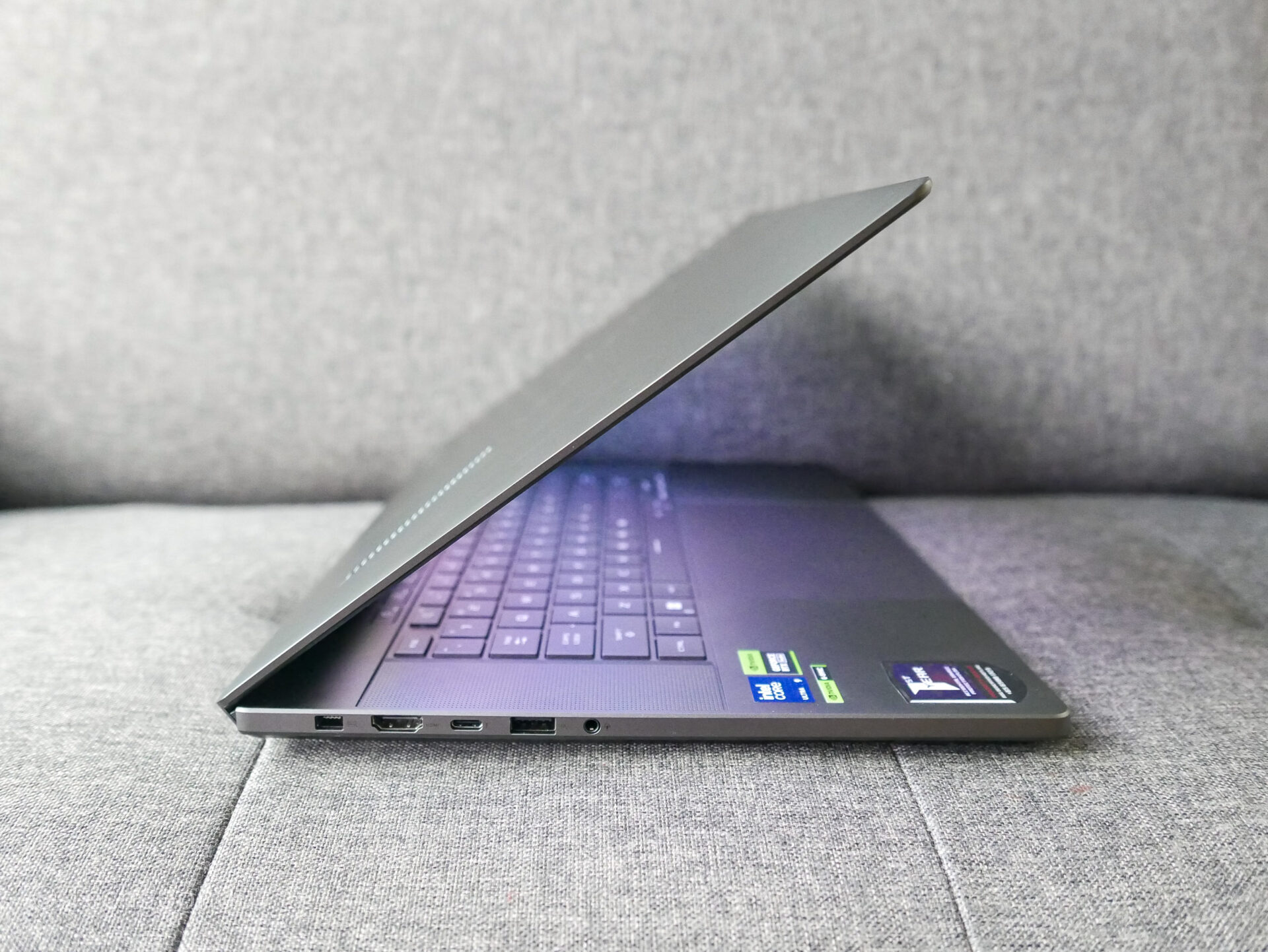
The main downside, I’d say, is that the S$4,199 Asus ROG Zephyrus G16 isn’t cheap. As all nice things are usually, it’s a well made machine that comes with a premium price tag.
If you’re willing to get a less-pretty design and turn to older Intel chips, you should be able to snag an RTX 4070-based gaming notebook for less. Or, if you don’t need portability, you can pack more performance into a desktop PC for the same price.
That said, the ROG Zephyrus G16 is such a well-put-together portable package, especially with the high-quality screen that makes a real difference in games. If you have the budget and are looking for a compact yet powerful gaming machine, it’s definitely worth checking out.
CLARIFICATION at 02/04/2024, 8:34pm: Based on information on an Asus website, an earlier version of the article misstated the amount of memory in the notebook. This has been corrected.







I think this model has 32gb of ram, not 16gb.
Hi YY, you are right. Thanks for pointing this out. I had taken the information from the Asus site which stated “16GB*2” and was confused by that. I should have checked with my benchmark tests, which I just did – they confirmed that the notebook has 32GB instead of 16GB. The article has been updated. Thanks for reading the review and letting us know.